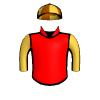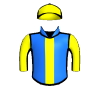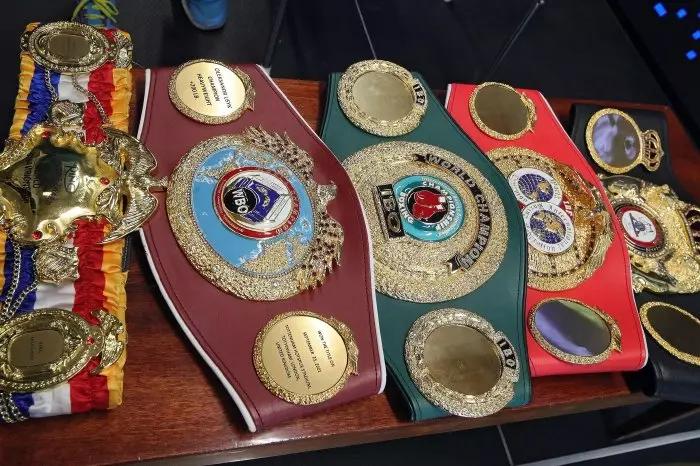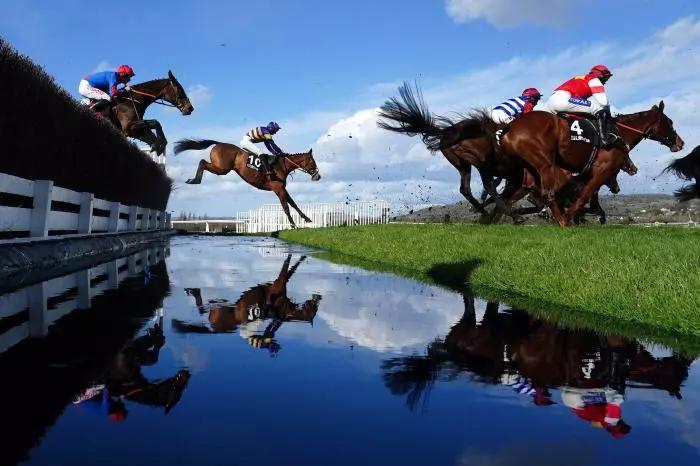From Foinavon to Becher’s Brook - a thrills and spills guide to the Grand National fences

Each year, more than 500 million people around the globe hold their breath to watch the greatest steeplechase of them all - The Grand National.
The big race at Aintree is a massive spectacle in every way, with 40 horses, competing for the £750,000 prize pot, usually in front of a sell-out crowd of 70,000 at Aintree.
If anything, this year's behind-closed-doors Grand National will ramp up the tension as households all over the world stop to watch the most colourful event in jumps racing.
Standing in the way of the horses and jockeys are the 30 fences which make up the gruelling Grand National course. There are actually 16 obstacles, with 14 jumped a second time to add up to the four mile, two and a half furlong course.
Planet Sport inspects the main fences at the Aintree spectacle and the skills needed from punters' picks to emerge victorious. You can also read our feature on the runners and riders for the 2021 event here.
Fence 6 & 22: Becher's Brook
Just the name 'Becher's Brook' is enough to make jump jockeys shudder, as the fearsome fence has unseated countless riders.
The first to go was Captain Martin Becher, the 40 year-old former soldier, riding in the first ever Grand National in 1839. His horse Conrad refused the jump and propelled Becher into the brook beyond, and the fence gained a name.
Becher later claimed that before he landed in the brook he had never tasted water without whisky.
Other notable fallers at the famous fence include Andy Pandy, en route to denying Red Rum the hat-trick in 1977 but who couldn't stick the huge drop. Also Clan Royal, tanking in front under AP McCoy in 2005 but carried out by a loose horse who didn't fancy a pop at Becher's.
Andy Pandy 7/1 Fav, clear at Becher's Brook when he came a cropper pic.twitter.com/Cj3hyMuKeC
— Anaglogs Daughter (@AnaglogsDaughtr) July 23, 2018
A practice run over the National fences in a race like the Becher Chase can help horses prep for a leap over Becher's Brook but in this race of extreme jeopardy, jockey bravery and a good dose of luck also come into play.
Fence 7 & 23: Foinavon
After successfully negotiating the formidable Becher's Brook, it was the deceptive twenty-third fence which caused the 1967 Grand National field to come a cropper.
A loose horse prompted a pile-up of animals careering into the fence and depositing their riders onto the Aintree turf.
The plodding Foinavon was so far behind, his jockey John Buckingham was able to weave in between fallers and run on for a shock 100/1 win.
Considered such a no-hoper, Foinavon's trainer and owner didn't even turn up to Aintree and the jockey Buckingham, revealed some years later that he was only fourth choice to ride the outsider.
The small but mighty Foinavon fence at just four feet, six inches shows that the Grand National is a mental test for horse and rider as well as a physical one with such a variety of obstacles to negotiate.
Fence 8 & 24: Canal Turn
If your horse has managed to get past Becher's Brook and Foinavon, then it will be rewarded with yet another treacherous fence in the form of the Canal Turn.
This fence is literally a case of cutting corners as the course takes a 90 degree turn immediately after, meaning jockeys look to take the fence on an angle so as not to lose ground.
This is counterintuitive for animals trained to jump straight and true, adding to the disorientating nature of the race, compounded by the presence of up to 40 horses.
It's been 20 years since one of the most remarkable renewals of the Grand National . 😲
— Racing TV (@RacingTV) April 2, 2021
🐴 Red Marauder and Smarty were the only runners to complete without mishap. Blowing Wind and Papillon were remounted, which is no longer allowed.#GrandNational #8DaysToGo @AintreeRaces pic.twitter.com/f0iDtYrrFQ
In 2001, the loose horse, Paddy's Return, caused a melee at the first Canal Turn, parting various horses and jockeys. He then refused the fence again on the second circuit, almost unseating Richard Guest on eventual 33/1 winner Red Marauder. Only four horses finished the race, thanks to the treacherous Canal Turn.
This five foot high, right-angled fence requires flexible jumpers and brave jockeys to take the initiative and save ground on the turn.
Fence 9 & 25: Valentine's Brook
It was a case of less haste and more speed for Valentine in the 1840 Grand National.
Rumour has it that jockey John Power wagered that his mount would be ahead after a circuit, so he approached the second Aintree brook at high speed.
His horse Valentine wasn't enamoured with the idea, attempting to refuse but was going at such a lick he corkscrewed over the fence and landed hind legs first.
Power won his bet by finishing the first half of the race in first place but could only make third place overall.
Valentine's has seen the end of many a decent horse's chance in the Grand National, including the Nicky Henderson trained Long Run, who fell at the fence when well placed in second in the 2014 edition.
Fence 15: The Chair
The Chair is jumped just once during the Grand National and for good reason, being the highest fence in the race at five feet two inches.
Horses and riders have to clear a six foot ditch before leaping this behemoth standing in front of the Aintree Grandstand for that extra touch of pressure.
Perfect jumping position is key to this bewilderingly narrow fence with the landing side six inches higher than the takeoff side. Jump too soon and the sheer size of the fence becomes insurmountable, too late and the horse has too much to do to emerge unscathed.
The Chair has caught out various horses over the years, not least Silver Birch in the 2006 renewal, falling under Sam Thomas. Silver Birch made no such mistake a year later, pinging over the Chair and winning the race at 33/1.
The fact that there has been no equine fatalities over The Chair since 1979 is testament to the improvements in fence safety and the respect that jockeys grant this towering obstacle.








